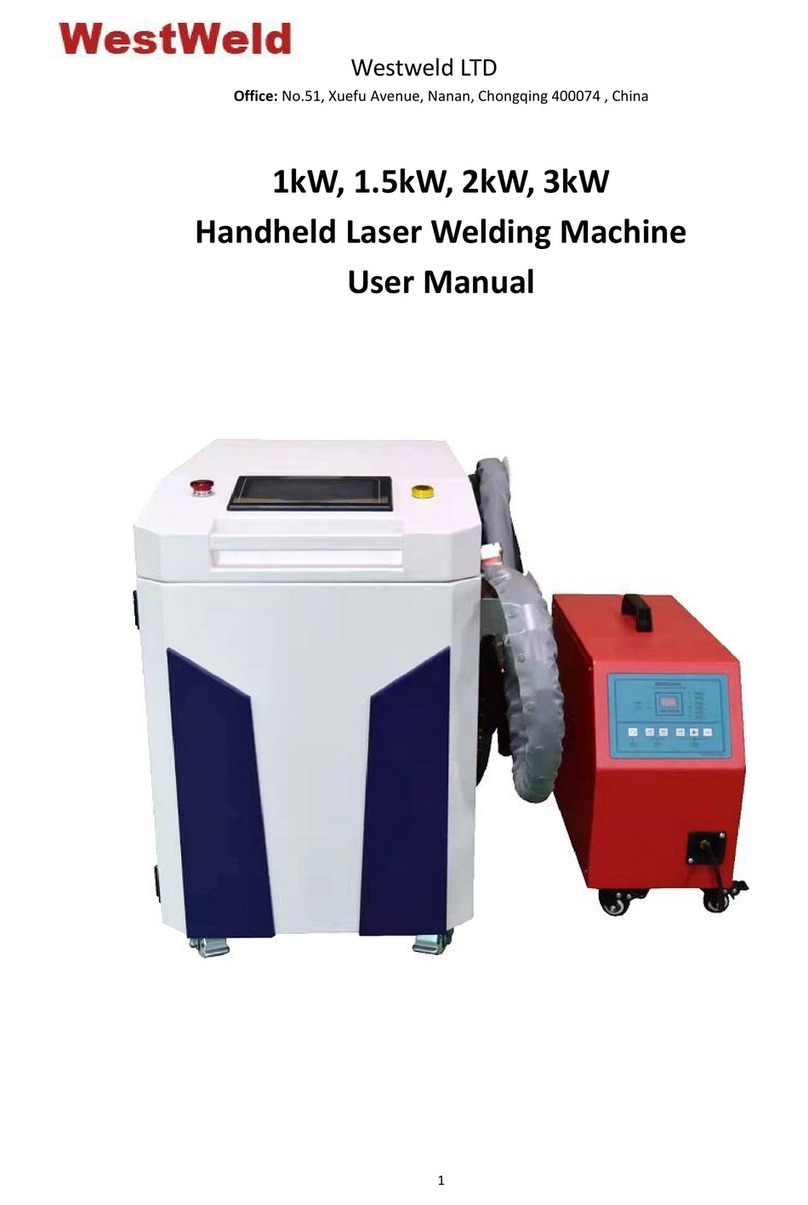
3.3 Select Welding Parameter
As the welding is performed by discharge of capacitors, the welding time is very short, only several milliseconds, so the welding
time is designed and there is no need to adjust it. Just adjust the charge voltage is ok. Generally, the bigger the stud diameter is,
the more energy is needed, as well as the charge voltage. The storage energy of the welding machine is directly proportional to
the square of capacitors charge voltage.
Different welding parameters and welding machine should be selected according to the graph. When weld copper stud, the
voltage should be 20% higher than steel stud, and aluminum is 30% higher. Please check several times after choosing a
elementary charge voltage, and eventually, get the optimal voltage parameter according to the welding quality.
3.4 Preparation Before Welding
Make sure the distribution voltage is accord with the welding machine: AC 220V.
Anticlockwise turn the charge parameter (voltage) potentiometer to zero.
Switch on the power, the power supply indicator lights and the fan begins to run and the capacitor begins to charge.
Turn potentiometer clockwise till the shown voltage is conformed to the set voltage parameter. If the voltage is
exceeded, please press reset button to release the redundant voltage, and then turn potentiometer anticlockwise, do
not loose the reset button switch till the voltage fall to the set value.
Grounding clamp should connect to work piece perfectly. Clear up the grease stain, lacquer, rust and oxidized layers.
While welding sheets, there should be liners at the back of work piece to assure the smooth of surface.
3.5 Welding Operation
Hold the torch by your hand, and make the stud aim at the welding position of work piece.
Press the torch support foot on work piece, make sure the three-support feet are in the same plane of work piece.
Press the button on the welding torch.
“Bang” is a normal phenomenon while welding and that means the welding is finished.
Pull out the welding torch vertically, and the capacitor will charge again immediately to prepare for the next welding.
Install the stud and repeat 3.5.1~3.5.5 to carry through the next welding.
Turn off the machine: Turn the supply switch down and cut off the power. The energy stored in capacitor will be
released automatically.
3.6 Pay Attention (Very Important)
While installing stud and aiming, do avoid pressing welding torch botton; furthermore, it is forbidden to aim at any
parts of body to avoid accidents!
After pressing the button on welding torch, it is forbidden to move the torch.
Insert the stud into chuck, and contact the end of stand bar. The chuck must clamp the stud tightly; otherwise you
must check out and repair it. Please don`t weld before getting rid of defects.
It is forbidden to move welding machine by hauling cables.
3.7 Quality Checking
Besides checking the appearance welding seam, the welding quality can be checked by bending: make the stud incline
some degrees to a direction by hammering, 300for mild steer and stainless steer; and150for brass, aluminum and its alloy. If
there is no fracture or crack, it is suppose to be qualified.
































